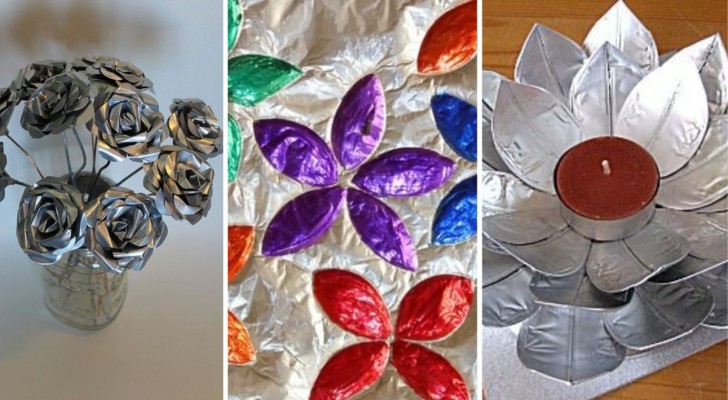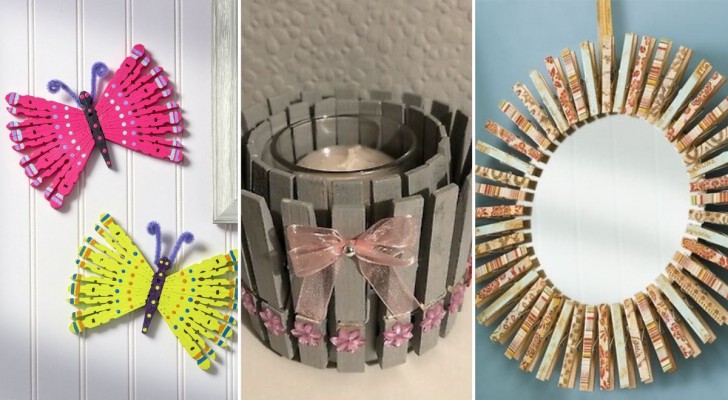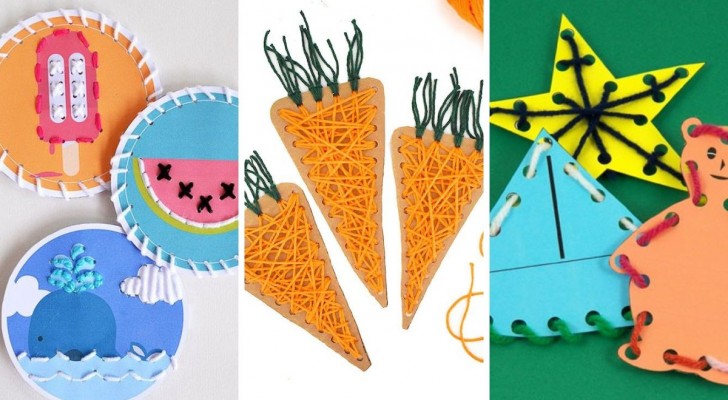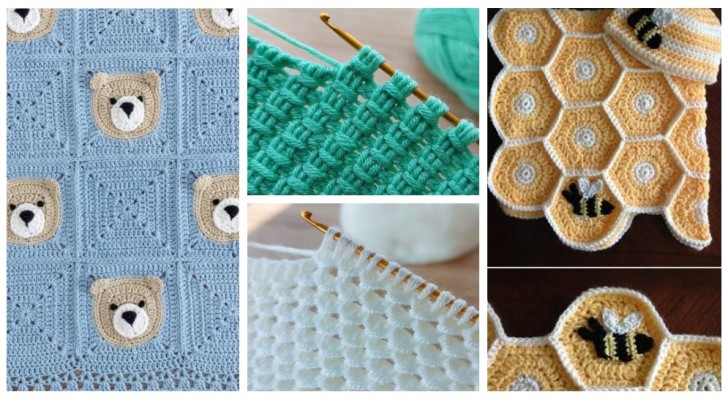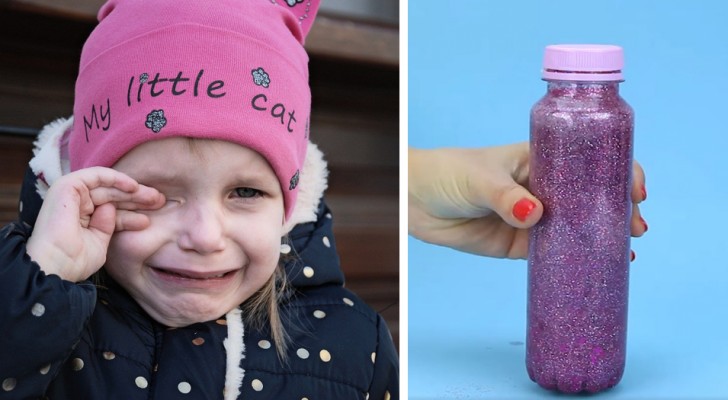7 ideas for creating sensory games for children
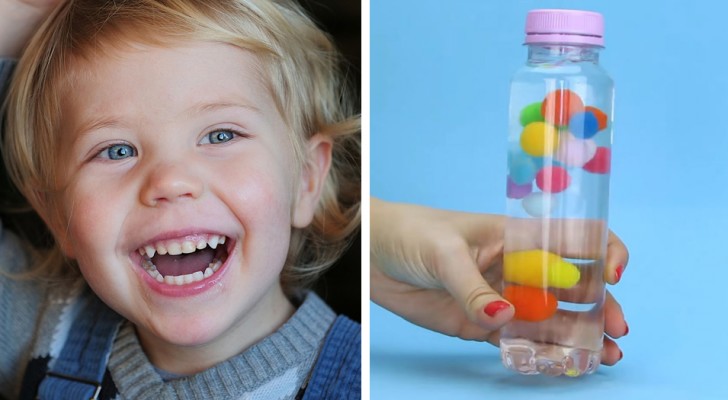
Sensory games are those that stimulate the senses of children, activating their understanding of the world around them.
Playing with tools that from time to time stimulate above all sight, touch and hearing, - but there are also activities that stimulate smell and taste - children learn about the world in a fun way. They must therefore be colorful and interactive, so as to capture the attention of the little ones and make them want to discover how to use them and exploration itself becomes an enjoyable moment as well as a learning moment.
The fact that they are so charming also makes them great tools for managing emotions. In fact, not only adults, but also children have to cope with sudden fits of anger, tears or anxiety, and not having the same ability as adults to deal with them in a rational and balanced way, it is necessary to help them by providing them with the appropriate tools to manage their their emotions.
This approach which aims at empowering children, made aware of their actions and emotions through stimulating activities and dialogue, is what distinguishes Montessori pedagogy. And it is precisely in the sign of this discipline of education that sensory games were therefore invented, capable of distracting children when they lose control so as to help them regain calm.
Even at home you can easily create several, and we explain below how.
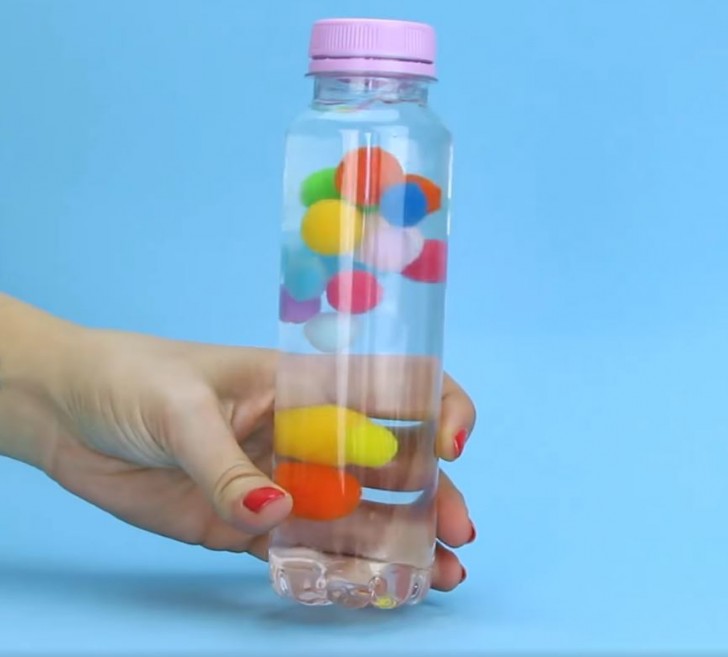
Creativo
A bottle full of pompoms
What you need:
- A clear plastic bottle. It must be easy to handle even for the little ones, so choose a half-liter one, and it must also allow you to see the contents clearly as well as be filled easily, so it must have a wide mouth and the stem as straight and smooth as possible.
- Colored pompoms, the little ones for creative jobs
- Water
How to build the game:
- Pour the pompoms into the empty bottle, they don't have to be too many, so get about three fingers high from the bottom.
- Add the water up to about a finger below the neck
- Close tightly and then let the children shake it to see how the colored pompoms float inside.
A bottle with glitter
What you need:
- A plastic bottle. The same considerations made for the first game apply.
- A bottle of clear liquid glue Glitter. You can use any size you prefer and possibly also directly use glue with glitter, but the effect is more pleasant with transparent glue and fine glitter together with others a little larger, perhaps such as those shaped in the shape of a star.
- Water
- Hot glue
How the game is built:
- Pour the glue into the bottle
- Add the glitter: the amount is up to you but to not overdo it, start with a few, you can always add them later.
- Fill the rest of the bottle with water up to a finger from the neck
- Shake well to mix the ingredients: if you think there are few glitter, add a little.
- Seal the cap with hot glue. When it has set and is dry, you can let the children play with it.
Observe the way in which the glitter fluctuate according to the movements of the bottle, the speed with which they swirl that changes over time, try to identify the larger ones: they are all curious and pleasant phenomena to follow, perfect for capturing the attention of little ones.
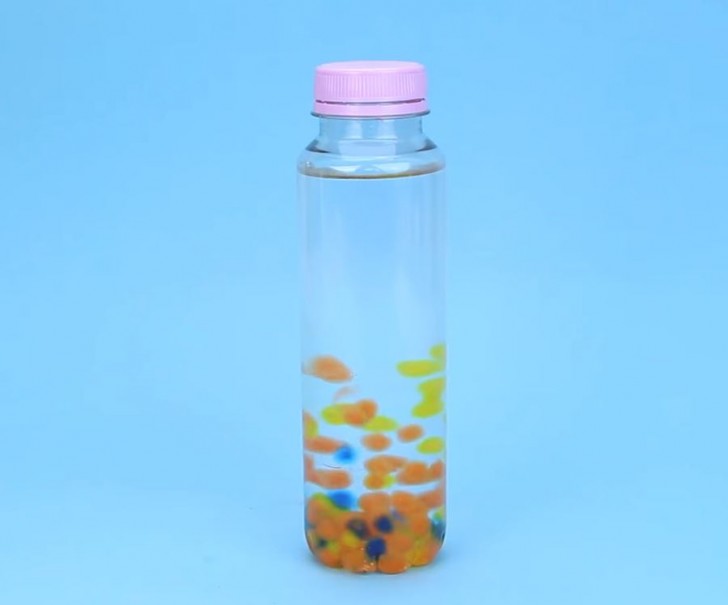
A bottle with water beads
What you need:
- A plastic bottle like those of the other games
- Coloured water pearls. They are those gel pearls used in flower pots, made of a polymer capable of absorbing water, so as to swell up to go from spheres with a diameter of 1mm to balls with a diameter of 1cm. In vases they are used to retain moisture by releasing water slowly, but they are also perfect for sensory games (under close supervision of adults).
- Water
How the game is built:
- Pour some colored pearls into the empty bottle, start by filling a couple of fingers from the bottom.
- Add water until just below the neck of the bottle
- Close and shake a little: if it seems appropriate, add more pearls.
- Close the cap tightly and let the children shake the bottle to see how the colored balls move, which will gradually increase in size.
One sachet with food coloring
This game, like the others that follow, can be used alone, but it is more fun to create a table with different sensory games to try together.
All you need for the sachet with the food coloring
- A transparent plastic bag for food, better if it does not have too many writings or drawings
- Scissors
- Greaseproof paper
- Iron
- A small funnel
- Water
- Vegetable oil
- Food coloring (better in gel rather than powder)
How the game is built:
- Cut away a third or half of the food bag, so as to keep only the bottom, with edges about ten centimeters high, otherwise the game will come out too big and unwieldy.
- Fold the sheet of parchment paper and place it over the open flaps of the bag, as if closing it.
- Now pass the iron over the oven to seal the open edge of the sachet by melting the plastic, but do not close the whole side: you need to leave about 3 cm open on one end to be able to fill the sachet. Just pass the tip of the iron moving it quickly enough, without dwelling too much in any point, since the plastic of these bags melts easily.
- Place the funnel in the open slot and use it to pour the ingredients
- Start with a little vegetable oil: you don't need much, just to make the liquid viscous
- Add water until the bag is almost completely filled (remember that you must be able to handle it in order to finish sealing it, then leave some air)
- Pour in the food coloring
- With the help of the parchment paper and the iron, finish sealing the bag completely.
Now this colorful package is ready to be handled by the little ones.

Squares to paint with your hands without getting dirty
What you need:
- A canvas covered panel for painting
- Tempera tubes of 3 different colours
- Transparent film for food
How to build the game:
- Arrange small amounts of gouache on the canvas, first with three points of color well apart on a line at the top, center and bottom. Now add points of different color between the ones you just drew and also other lines in the middle of the first three. Fill in the gaps in the last two lines created with other stitches of the third color. They must all be more or less equidistant from each other.
- Carefully cover the picture with food film, trying not to crush the colors too much on the canvas, and stop it on the back of the picture, perhaps with the help of tape if necessary.
- Give the canvas to the children and let them have fun crushing the colors and scribbling to mix them with their fingers, without getting their hands and clothes dirty!
- You can also make a similar game using a sheet of paper placed on a baking sheet instead of the square, always using the transparent film for protection.
A sensory sachet with staples
What you need:
- A transparent plastic bag for food, better if it does not have too many writings or drawings
- Scissors
- Greaseproof paper
- Iron
- A small funnel
- Coloured paperclips
- Magnets
How the game is built:
- Cut away a third or half of the food bag, so as to keep only the bottom, with edges about ten centimeters high, otherwise the game will come out too big and unwieldy.
- Insert a handful of colored paper clips inside the envelope.
- Fold the sheet of parchment paper and place it over the open flaps of the bag, as if closing it.
- Now pass the iron over the oven to seal the open edge of the sachet by melting the plastic, but do not close the whole side: you need to leave about 3 cm open on one end to be able to fill the sachet. Just pass the tip of the iron moving it quickly enough, without dwelling too much in any point, since the plastic of these bags melts easily.
- Place the funnel in the open slot and use it to pour a little water, the equivalent of two or three fingers of a glass will suffice.
- Finish sealing the bag with parchment paper and an iron
- Give the magnet to the children, and let them slide it on the outside of the bag to make the staples move inside.
A sensory sachet with pompoms and beads
What you need:
- A transparent plastic bag for food, better if it does not have too many writings or drawings
- Scissors
- Scotch tape
- Colourful pompoms
- Coloured beads
- Coloured sand of at least two colours
How the game is built
- Cut away a third or half of the food bag, so as to keep only the bottom, with edges about ten centimetres high, otherwise the game will come out too big and unwieldy.
- Insert a handful of coloured pompoms and a handful of colored beads, then place the bag on a plate and spread them a little with your hands, without letting them come out.
- Add the two coloured sands
- Use scotch tape to close the flaps at the top of the bag (you could also use the iron method in this case, but it is not strictly necessary)
- Children will be able to manipulate the sachet to perceive shapes and textures and mix all the materials inside.
- With these last 4 sensory games you can create an interactive table: you just need to tape each envelope onto a wooden panel, or maybe sturdy cardboard or even a canvas to draw, so that the children can go from a tactile sensation to a other, and see how the various materials interact with each other, what noise they make when touched.
Ready to have fun with the children with these sensory games?
